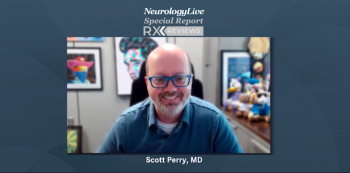
Cannabidiol for Seizures
Marijuana has been employed since ancient times for the treatment of epilepsy. However, rigorous scientific data supporting its efficacy has been essentially nonexistent until recently.
[Please scroll down for the video]
TRANSCRIPT
Welcome to Neurology Times. I’m Dr. Andrew Wilner, and today I would like to discuss the use of cannabidiol as an epilepsy therapy.
Marijuana has been employed since
Dravet Syndrome is associated with multiple seizure types that are difficult to control. The development of seizures in the first year of life is followed by behavioral, cognitive, and motor deterioration. Dravet Syndrome is
Methods
This study matched 61 patients in the cannabidiol group, mean age of 9.7, to 59 patients in the placebo group, mean age of 9.8. The mean number of concomitant antiepileptic drugs was 3 in the cannabidiol group and 2.9 in the placebo group, indicative of difficult to control seizures.
The authors prescribed cannabidiol oral solution at 20 mg/kg/day or placebo as an add-on to baseline seizure medications.
Results of a 14 week treatment period were compared to the 4 week baseline.
Results
Baseline convulsions were 12.4/month in the cannabidiol group, which decreased to 5.9 during the treatment period, a 38.9% reduction.
In the placebo group, baseline convulsions were 14.9, which decreased to 14.1 during the treatment period, only a 13.3% reduction.
The difference between the treatment and placebo groups was 22.8%, which was significant at p=0.01.
The percentage of patients with at least a 50% reduction in convulsive seizures was higher in the cannabidiol group at 43% vs. 27% in the placebo group. However, this difference was not statistically significant.
On the Caregiver Global Impression of Change scale, 62% of the cannabidiol group improved by at least one category compared to only 34% of the placebo group, which was significant at p=0.02.
More patients were seizure free (5%) in the cannabidiol group vs. none in the placebo group, but this difference was not statistically significant.
Serious adverse events were more common in the cannabidiol group than the placebo group, 16% vs. 5%, respectively.
Adverse events more common with cannabidiol than placebo included: somnolence, diarrhea, decreased appetite, fatigue, and pyrexia. The most common adverse event was somnolence, occurring in 36% of the cannabidiol group vs. 10% of the placebo group.
Abnormal liver aminotransferase enzymes occurred in 12 patients in the cannabidiol group vs. only 1 in the placebo group. Three patients in the cannabidiol group withdrew from the study due to abnormal LFTS, vs. one patient in the placebo group.
Overall, adverse events caused 8 patients in the cannabidiol group to withdraw from the study, vs. 1 in the placebo group.
Conclusions
Cannabidiol did significantly reduce the frequency of convulsions compared to placebo, with an adjusted median difference of 22.8%. Quality of life also improved as measured by the Caregiver Global Impression of Change scale. However, adverse events, including somnolence and elevated liver function tests were more common in the cannabidiol group.
Comment
This study does demonstrate a moderate level of efficacy of cannabidiol for seizure control in this special population of children with refractory epilepsy and Dravet Syndrome. Side effects may accompany the beneficial effect on seizure frequency.
Limitations of the study include the relatively small number of patients and brief period of treatment. In addition, because the cannabidiol had a different taste than placebo, there may have been a problem with blinding. Further studies are necessary to refine the role of cannabidiol in the treatment of seizures in Dravet syndrome as well as other types of epilepsy.
Thank you for listening. I’m Dr. Andrew Wilner, reporting for Neurology Times.
References:
1. Russo EB.
2. Devinsky O, Cross JH, Laux L et al.
3. Strzelczyk A, Schubert-Bast S, Reese JP et al.
Newsletter
Keep your finger on the pulse of neurology—subscribe to NeurologyLive for expert interviews, new data, and breakthrough treatment updates.








































